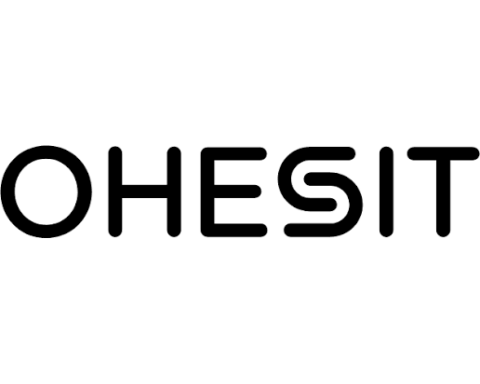As 2022 ends, MSPs are assembling their plans for 2023. The plans that work will tap into trends that are developing over the next 12 months. What are they? Here are five major trends that will shape the MSP market in 2023.
1: Consolidation will be top of mind
Last year saw increasing consolidation in the MSP market, with more prominent players swallowing up smaller rivals to accelerate growth. This consolidation trend will continue in 2023 as MSPs move away from organic growth and look to acquisition as a way to expand their footprint. The skills shortage in the industry will further fuel the consolidation trend. As MSPs struggle to staff their operations adequately, they will embrace M&A to acquire the talent they need and propel their business forward.
Another consolidation form—specialization—will also be a trend among MSPs in 2023. It’s challenging to be everything to everyone, so MSPs will continue consolidating their services. For instance, a generalist MSP may not be able to effectively offer cybersecurity services due to the complexity of the technology and the high levels of domain expertise required. As a result, MSPs will increasingly choose to become specialists in one particular area or industry where they can offer best-in-class services.
2: Inflation will cause a rethink of data centre investments
If inflation continues, the pressure will be on MSPs to maintain profits in 2023. That means they’ll have to reevaluate all aspects of their operations, including how their business model functions and how to achieve growth in an environment of unpredictable expenses. One of the most significant expenses for any MSP is data center costs, which include the ever-higher costs of storing data in public clouds.
Rising energy prices are forcing these large data centres to raise their charges significantly, putting into question the conventional wisdom that moving to the cloud is cheap. Indeed, public cloud prices are predicted to jump by more than 30% in Europe and about 20% in the U.S. due to spiking energy prices, according to research firm Canalys.
That’s why a 2023 trend will be for MSPs to transition away from the big public clouds and seek more cost-effective, high-performance storage solutions closer to home. Rising energy prices could also spur some SMBs to rethink their cloud strategy altogether and cause them to start repatriating their data from the cloud to on-premises. This trend will present a new opportunity for MSPs to provide their customers with on-premises storage and data-backup solutions.
3: Data recovery will be in demand
Any company can back up its data. But the real test is whether it can recover that data promptly after a cyberattack or other disruption. Too many MSPs and their customers believe that disaster preparedness begins and ends with backing up data—and forget that backup alone is not enough. In 2023, MSPs will start to direct more of their efforts toward helping customers quickly recover their data in an emergency. The first step in these efforts will be advising customers to develop a solid recovery plan.
Backed-up data is like a jigsaw puzzle. Trying to restore it without a good recovery plan is like putting together the puzzle without the picture on the top of the box. A lot more time is required. And time is what companies don’t have when disruption hits them, and they need to restore their data immediately—not in days or weeks. A solid recovery plan guides them in putting all the pieces together again when hours are of the essence and quick, effective action is necessary.
4: CRaaS will present an enormous opportunity
A big market for MSPs in 2023 will be cyber-recovery as a service (CRaaS). According to IDC, CRaaS is a service whose time has come, especially as ransomware attacks continue unabated, forcing victims to pay a high price to recover their data. IDC believes CRaaS can yield high-growth opportunities with solid margins for MSPs that can take advantage of it.
CRaaS is appealing to customers because it takes the arduous task of backing up data off their hands and provides them with data copies that are immutable and untouchable. Immutable storage protects data by taking snapshots every 90 seconds. These snapshots make it possible to go back to specific points before an attack and recover entire file systems in minutes. As a result, even if a ransomware attack is successful and a bad actor overwrites the current data state, a customer can quickly and easily recover their information to a very recent point.
5: Data tiering will be top of customer to-do lists
As energy costs rise, organizations of all sizes will rethink how they store their data. All data is not created equal and is not equally valuable. And if the goal is to save money, it’s probably not necessary to store or back up every scrap of data in the organization. There is a lot of redundant data that does not need to be preserved long-term, such as system images or replaceable data. It is especially true for remote workers, who tend to comingle their personal and professional data. The last thing a company wants is waste money storing every data on their machines.
MSPs can significantly benefit by providing storage solutions with data-tiering capabilities. Data tiering enables organizations to move the data they use less often to less-expensive storage levels. It allows them to reduce storage costs while safeguarding their most valuable data. A further upside of data tiering is energy efficiency—and lower electricity bills—because customers are devoting less computing power to storage. Data tiering will be critical in 2023 as storage costs continue to climb.
Final takeaway
The coming year looks to be a challenging one for almost all industries. In the MSP industry, the players that win will see the trends and adjust their models to take advantage of them. They will be the ones that succeed in 2023 and beyond.








